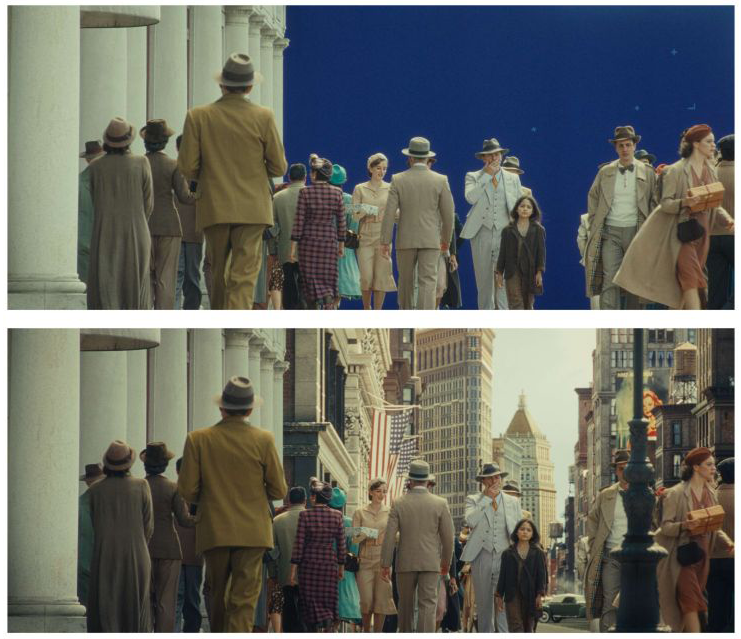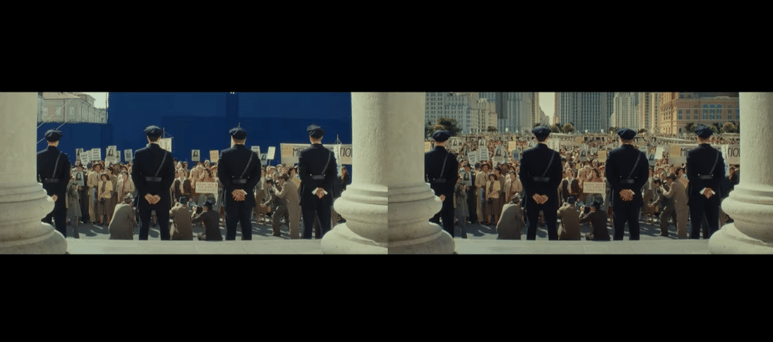VFX Supervisor Victor Perez built landscapes and filled them with people for the feature film, Naples to New York. On a short timescale, he found a way to do this efficiently and with high-quality results, winning two accolades at the David di Donatello Awards.
Challenge
The film was set in an imagined version of New York City. Victor worked with this unique brief to create hyperrealistic yet fantastical scenes.
Solution
Using a combination of Xsens and volumetric capture, shots were filled with natural and dynamic crowds in post-production.
Key takeaways
- Realistic human movement: Xsens picks up on small details and body language nuances, ensuring lifelike on-screen animations.
- High-volume motion capture data: Victor worked with a single artist to capture over 300 movement cycles within a day.
- Efficient post-production: Volumetric capture underpinned by Xsens enabled Victor to build dynamic crowds on an independent film budget.
Naples To New York follows two children in post-war Italy as they escape poverty and travel to the USA. Written by Federico Fellini in 1948 and uncovered 60 years later, the story has a specific neorealistic style, which was handled with care when production began. Director Gabriele Salvatores used this style in line with Fellini’s vision, requiring an archival feel and finetuned post-production. For this, Victor Perez stepped in – a VFX Supervisor on major projects such as Pirates of the Caribbean, Batman, and Harry Potter.
Building New York
To help visualize a fantastical vision of New York, Victor and his team undertook extensive crowd-building, architectural work, and prop integration using a small team of just 167 artists over the course of six months.
The post-production team was responsible for 536 shots across the film, providing visuals for traffic, buildings, and people. A significant focus was on the creation of New York itself. “Fellini had never been to New York,” Victor explains. “So it had to look fantastical and somewhat dreamlike. It also helped that I’ve never visited the city.”
New York scenes were shot in Trieste, Italy, reflecting Fellini’s not-quite-accurate idea of how the American city looked. “I created a merged landscape by using the architecture of Trieste and overlaying 1940s New York iconography,” says Victor. “But the real challenge was filling the streets with people.”

Creating crowds
New York is a famously busy city, so the team used a mixture of native filming and VFX to bring scenes to life. CG character creation was a strong start, but with just six months to complete the project, Victor searched for something more efficient, eventually opting for volumetric capture.
“We used a 36-camera cage to scan over 900 extras,” he says. “Then we animated them using Xsens inertial motion capture technology.” This dramatically reduced time for the Naples To New York post-production team, capturing scans in one day while being able to animate them at a later date.

Fast-paced motion capture
With the help of associate VFX supervisor Larisa Zhuraleva, Victor used the Xsens motion capture suit to create 300 animation sequences in a single day. These could then be applied directly to the scanned extras, making the crowd appear dynamic and bustling. “Using Xsens is like using a camera,” says Victor. “Once you’ve set it up, you can get as much content as you need.”
Inertial motion capture enabled the pair to create different postures, gaits, and gestures with a high level of precision. “We wanted our characters to move fluidly like in real life, so motion capture was the perfect solution,” Victor continues. “We could also evaluate our progress in real-time to see if we were getting the right movements and amend where needed.”
After a day of recording themselves, Victor and the team quickly transferred the motion capture data to post-processing software the next morning. From there, they fine-tuned movements where needed and prepared the scans for animation, resulting in a lively and highly realistic reconstruction of New York’s crowds.
Efficiency and longevity
A quarter of Naples To New York’s VFX shots involved Xsens motion capture. And within such a short period of time, the team needed to get crowd-building done efficiently.
“Using the Xsens suit was invaluable to the production,” concludes Victor. “It brought a depth of movement that really elevated the film. And now, I have a high-quality library of animations fit to use on projects to come.”
Take a look at Xsens motion capture technology.